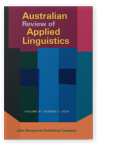Vol. 47:1 (2024) ► pp.78–100
Intimacy in online classrooms
Linguaplay, personal testimonies, and contrived chaotic material ecologies
In this article I describe the transition of a group of university students in Australia into an online learning environment during COVID-19 pandemic disruptions. I reflect upon my intersubjective experiences as the lecturer in an unexpected situation of urgency and physical distancing. Research has acknowledged synchronous virtual learning contexts as less psychologically distancing than previously thought. I argue that these contexts can foster profound intimacy between participants through linguistic and multimodal means. I use an auto-ethnographic narrative inquiry approach to share observations gained retrospectively through multimodal, critically reflexive, social semiotic discourse analysis of audio-visual recordings of synchronous workshops conducted in 2020. I attempt to fill the gap in research on intimacy in online educational settings by suggesting that intimacy can be created by linguaplay, personal testimonies, and contrived chaotic material ecologies. I advocate moving away from an obsession with standardising and generating student knowledge in formal online learning to a stance that values intimacy, connection, and spontaneity.
Article outline
- 1.Introduction
- 2.Intimacy in face-to-face educational settings
- 3.Intimacy in multimodal online educational settings
- 4.Research design
- 4.1Participants
- 4.2Data collection
- 4.3Data analysis
- 5.Linguaplay
- 6.Personal testimonies
- Small story – Laying myself bare
- 7.Contrived chaotic material ecologies
- 8.Discussion
- 9.Conclusion
-
References
For any use beyond this license, please contact the publisher at [email protected].
